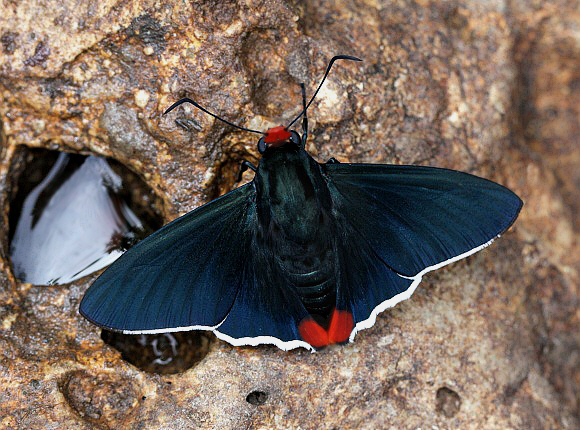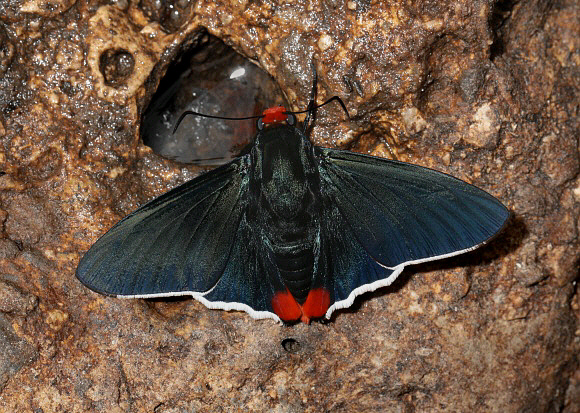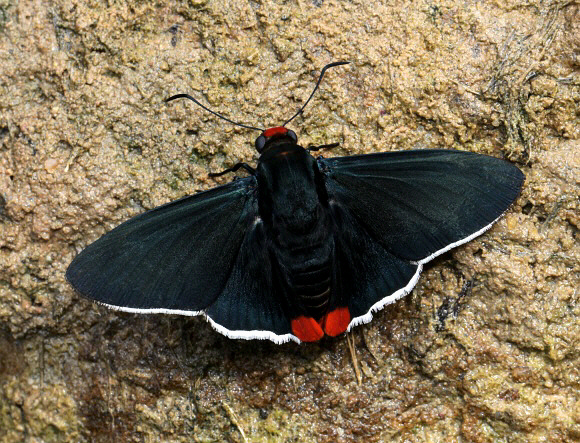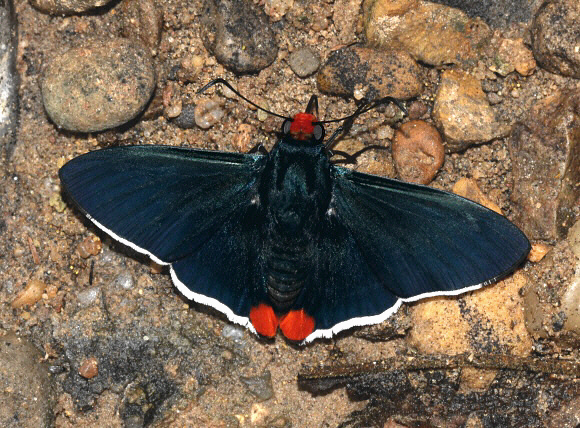
Introduction
The subfamily Pyrrhopyginae comprises 163 known species, most of which are found only in the tropical rainforests and cloudforests of South America, although a few reach as far north as Mexico, and a single species reaches Arizona. They are characterised by having bodies which are very large in proportion to the wings. Other characteristics include a massive muscular thorax, compressed abdominal segments, prominent eyes, and antennae with recurved clubs.
The tribe Passovini comprises of 26 species, placed within the genera Aspitha, Azonax, Granila, Myscelus and Passova.
The genus Passova includes 7 species – ganymedes, greta, gellias, glacia, nigrocephala, gazera and passova. The butterflies are strongly reminiscent of Pyrrhopyge, with triangular black wings with white fringes; and the head and the abdominal tip bright red. Unlike in Pyrrhopyge however Aspitha and Passova have bright red stubby “tails” in addition to the red markings on the head and abdomen. In Passova the face is red, whereas in Aspitha the neck is red but the face is black.
Passova passova is the most widespread member of the genus, being found from Colombia to Peru and Brazil. It has 6 described subspecies.

Habitats
This species appears to be confined to lowland and mid-elevation primary rainforests, at altitudes between about 300-1000m.
Lifecycle
To be completed.

Adult behaviour
Males are usually seen when discovered on the ground imbibing mineralised water from damp soil, urine-tainted sand, or at the edges of streams. They also feed at bird-droppings.

